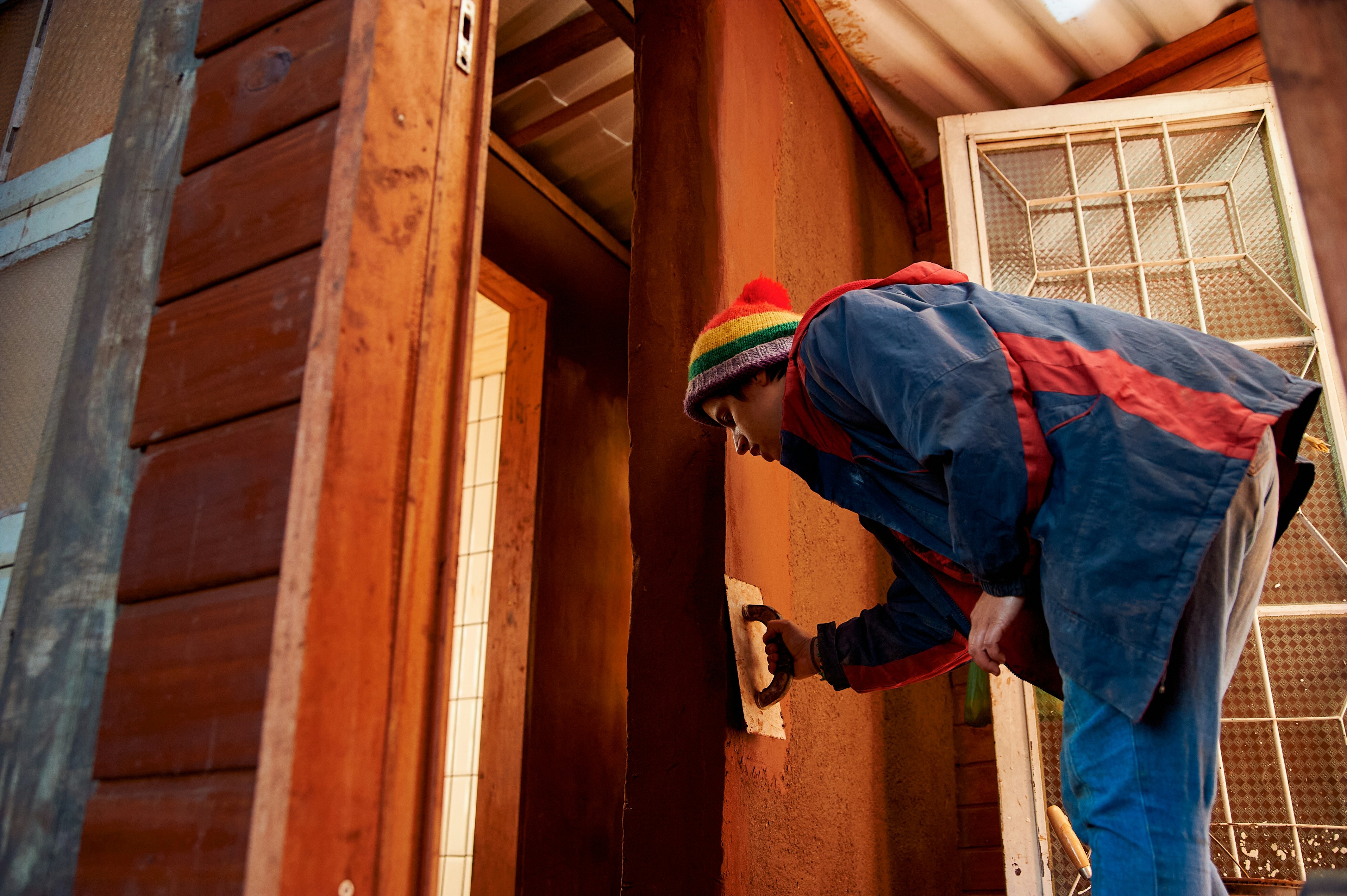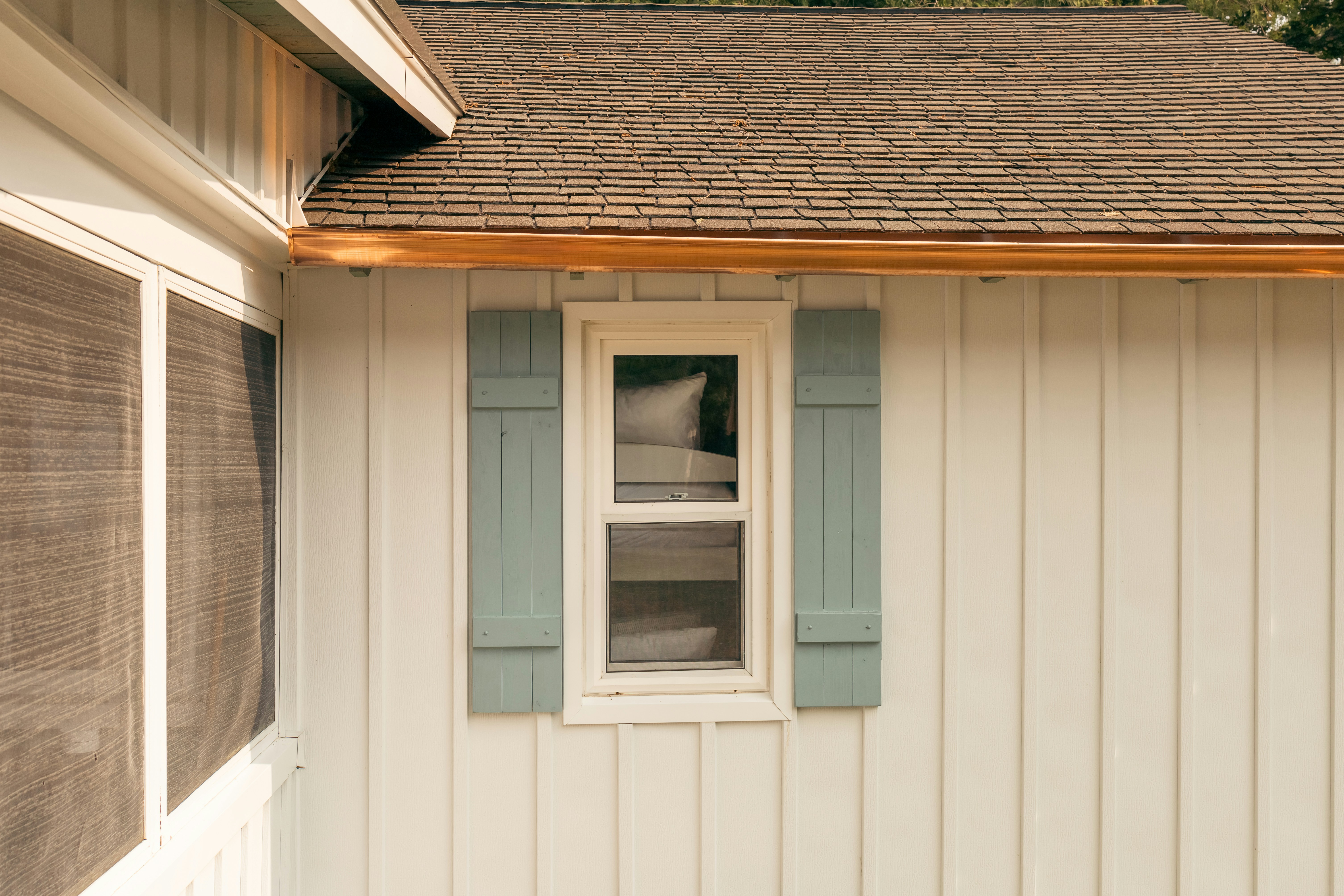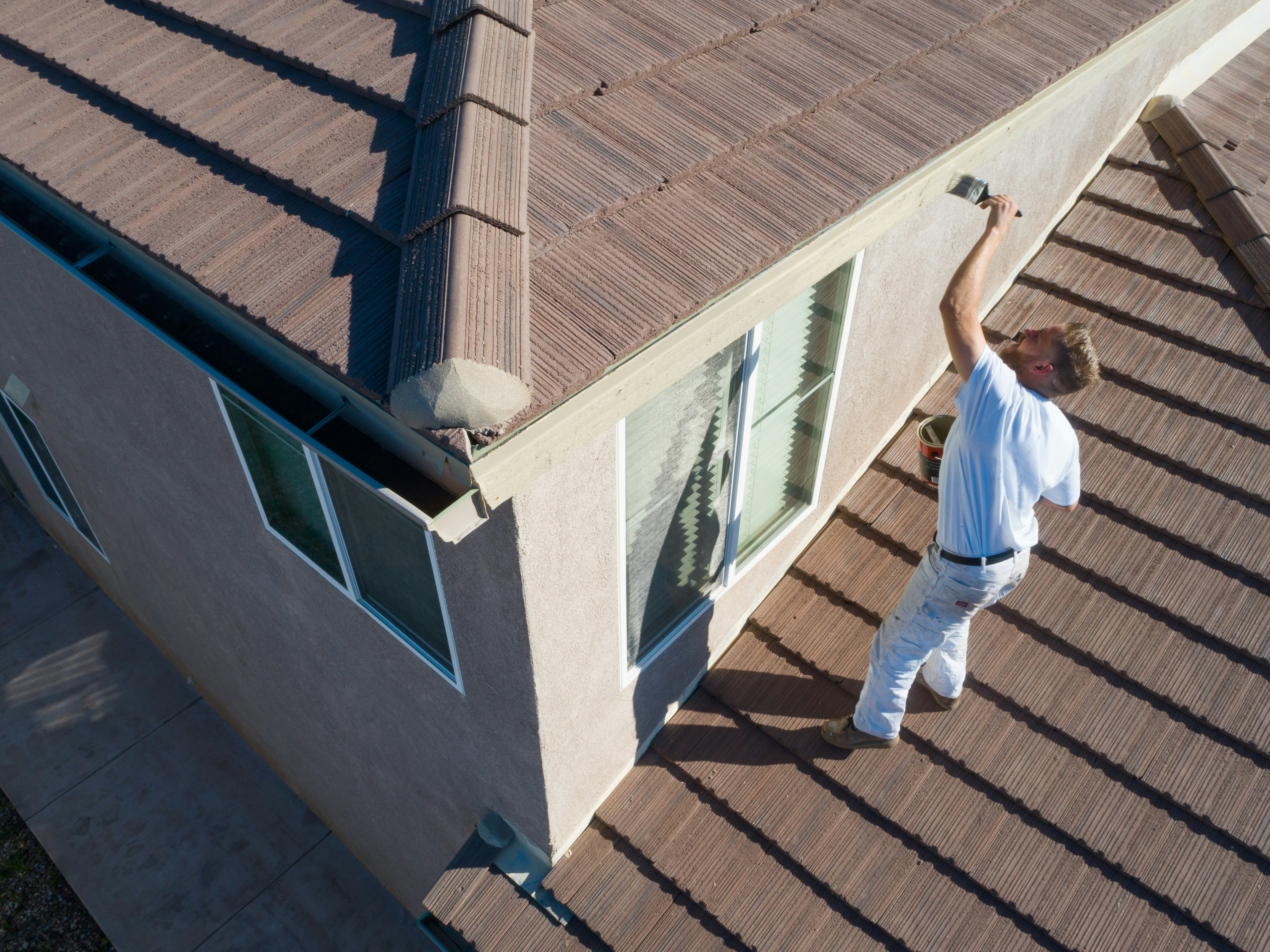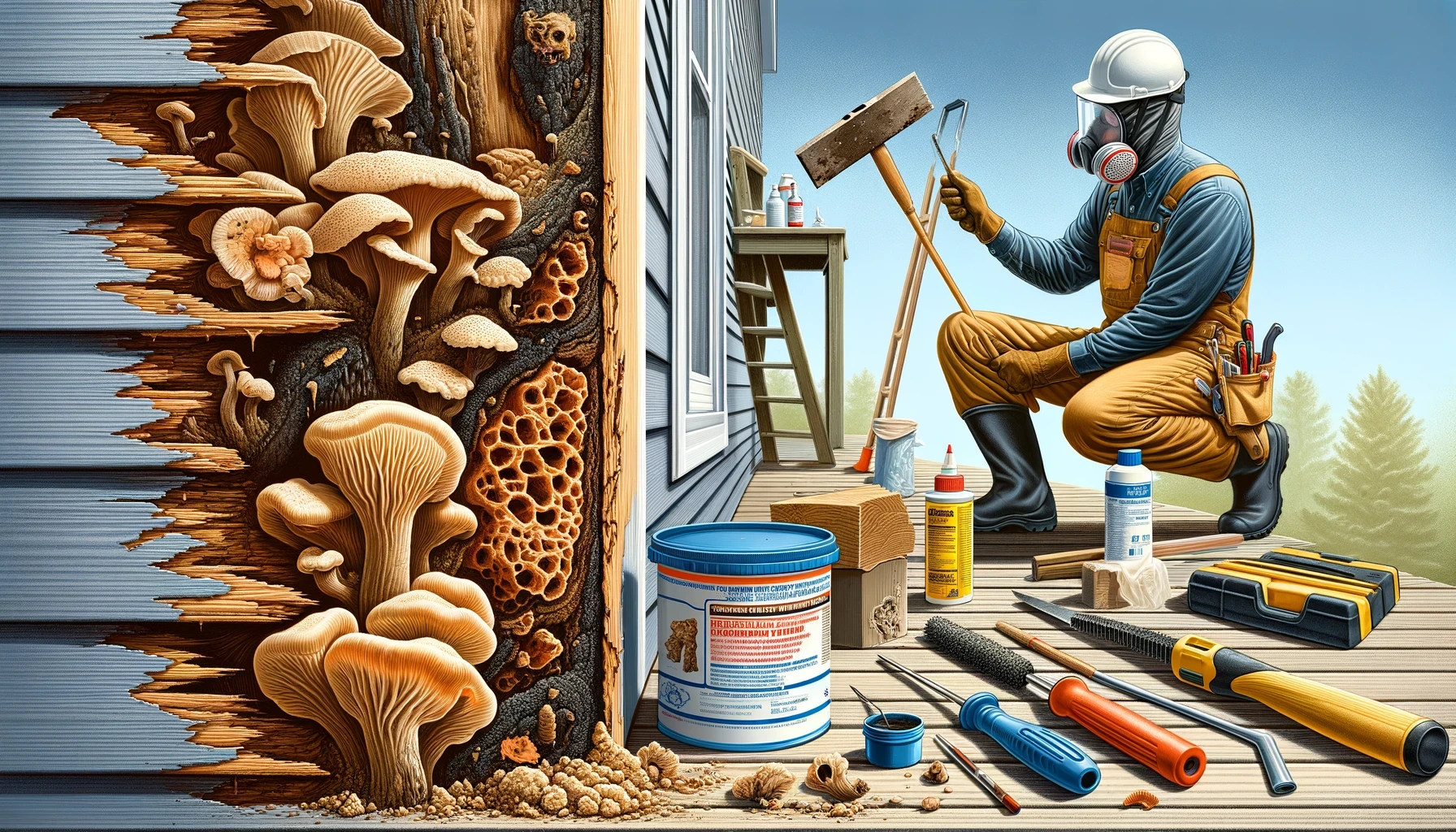
Dry rotting is a destructive fungal infestation in wood, often leading to serious structural damage within homes and even affecting tire integrity in vehicles. If you’re noticing timber that crumbles easily, a musty odor, or cracking in your tire sidewalls, you might be facing the threat of dry rot. This article will guide you through identifying signs of dry rot, understanding its life cycle, and taking decisive steps towards prevention and treatment—without resorting to excessive technical jargon or fearmongering. Read on to secure the structural health of your property and the longevity of your vehicles against this silent invader.
Key Takeaways
Dry rot requires specific conditions to thrive, particularly moisture levels around 20% and air for growth, underlining the importance of maintaining dry and well-ventilated environments to prevent structural damage in homes and buildings.
Early detection of dry rot is crucial and can be identified by visual and olfactory indicators such as timber with cuboidal cracks, orange fine dust, and a musty odor, which are signs that warrant immediate attention to prevent extensive damage and financial loss.
Effective treatment of dry rot involves a combination of strategies including the removal of affected timbers, application of fungicides and biocides, and in vehicles, regular tire maintenance with proper inflation to prevent rubber deterioration due to dry rot.
Understanding Dry Rot
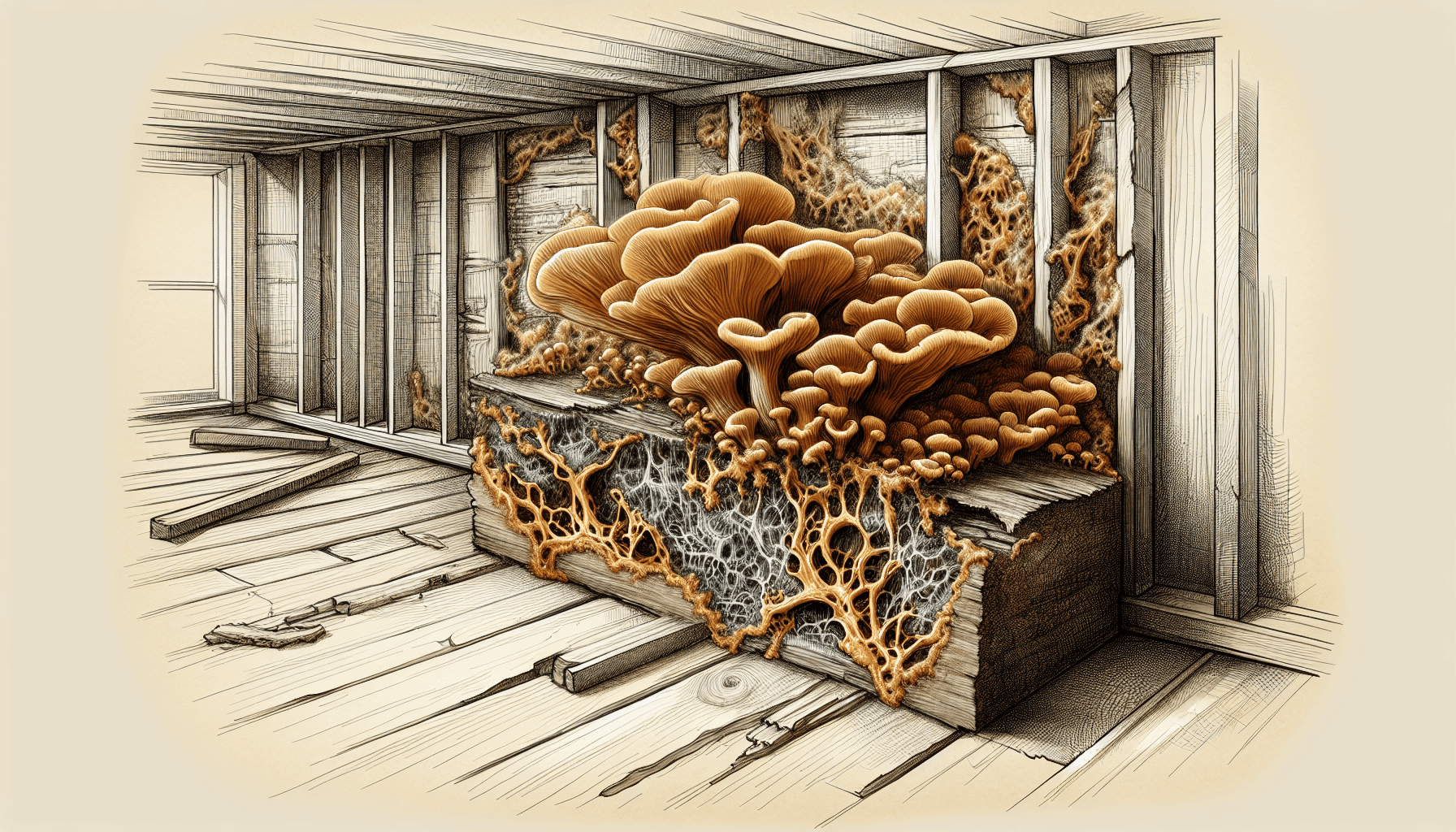
Unseen, lurking within the wooden fibers of your cozy abode, a formidable agent of decay, known scientifically as Serpula lacrymans, is the mastermind behind dry rot. This wood-destroying fungus harbors a voracious appetite for timber within buildings, spreading rapidly and compromising the very integrity of the structures that shelter us. Despite its menacing reputation, one must not forget that dry rot is not the only culprit; its counterpart, wet rot, also plays a significant role in the decay process, with both requiring specific conditions to flourish and wreak havoc on structural timbers.
The dry rot fungus, however, demands a peculiar set of conditions to thrive – a damp environment with a moisture content hovering around 20% and enough air to breathe life into its destructive pursuits. It’s a paradox – the term dry rot implies an aversion to moisture, yet without it, the fungus cannot perform its woeful woodwork. In this context, developing dry rot becomes a stark reminder that vigilance against damp conditions is not merely a matter of comfort but a battle for the preservation of our homes, as unchecked infestations can lead to grave structural damage.
Detecting Dry Rot in Your Home
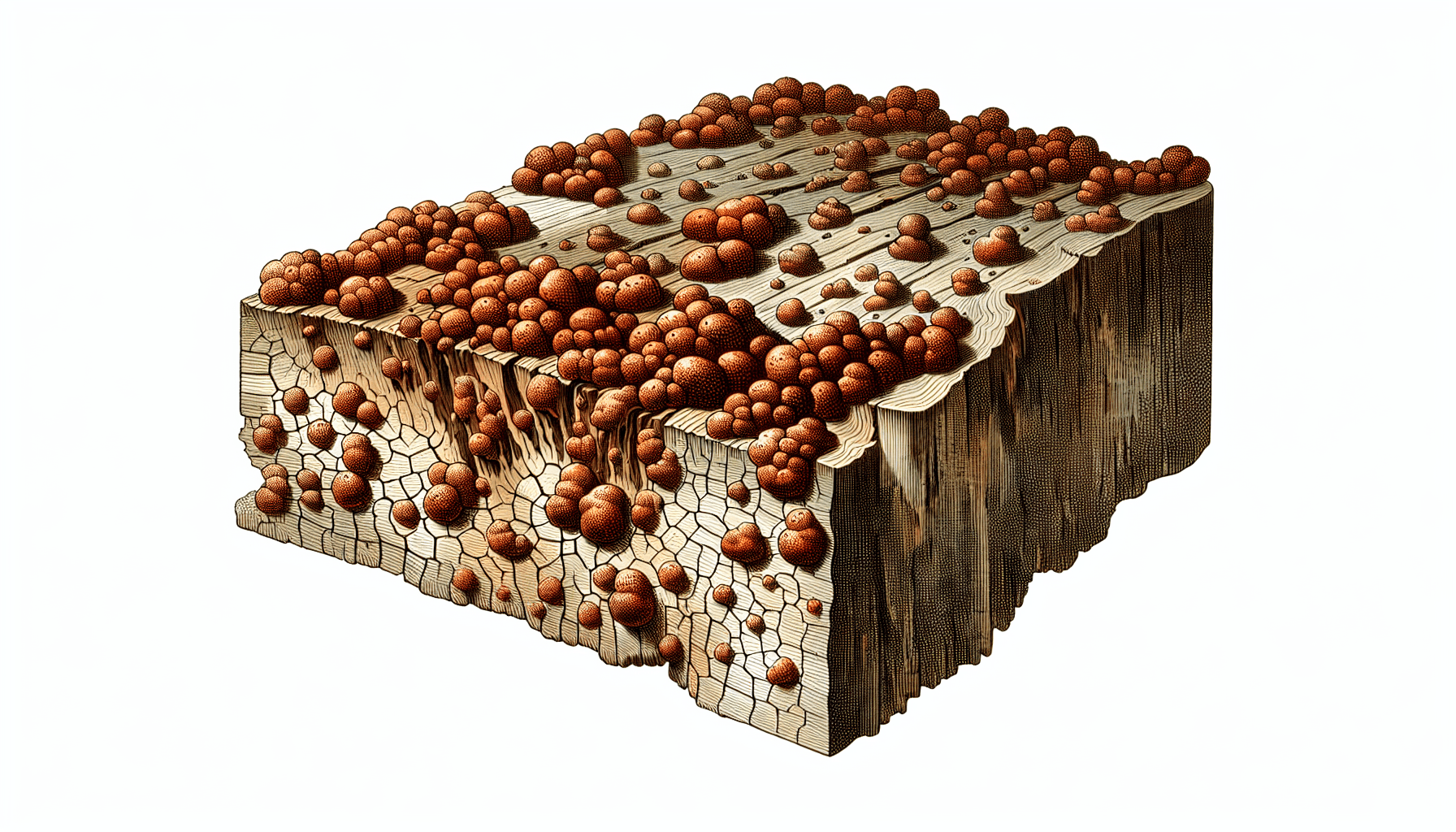
Have you ever stepped into a room with an unsettling suspicion that something isn’t right? This could be your early warning system signaling the presence of dry rot. Catching it in its infancy is not just a convenience—it’s a financial saver. The signs are there, whispering the tale of an unwelcome guest: timber that crumbles at a touch, a mysterious dust with a rust-like hue, and a musty scent that carries the essence of a forest floor. Being alert to these harbingers can save you from the insurmountable costs and extensive damage that accompany a full-blown dry rot infestation.
Visual Indicators: Cracks and Spores
Picture the wooden beams in your home as a canvas with dry rot playing the reluctant artist. Its signature lies in the brittle texture and cuboidal cracking of the timber, a pattern that seems to carve the wood into tiny, darkened cubes. This distinctive cracking is not just a blemish; it’s a beacon, signaling the silent spread of decay within the structural fibers of your residence. And let’s not forget the spores – fine orange dust that, when gathered in force, reveal the pervasive nature of a dry rot infestation.
As you inspect your home, keep a keen eye out for these unmistakable signs of fungal intrusion. Spotting these inscriptions early can lead to timely intervention, saving your sanctum from the further grasp of decay. It’s worth remembering, dry rot’s reach is limited by its need for moisture. Where dry conditions prevail, the fungus cannot claim territory.
Sensory Clues: The Dry Rot Smell
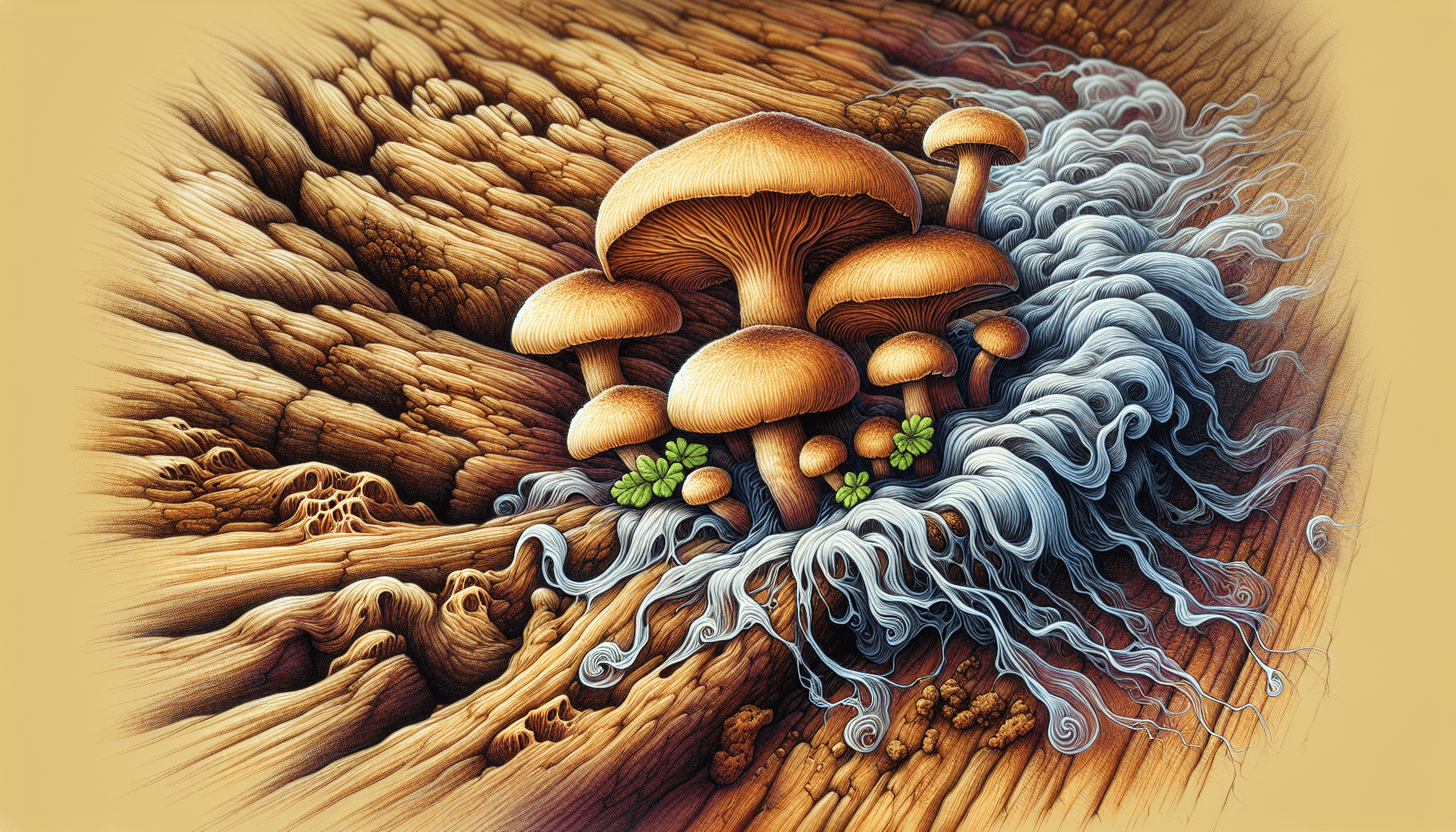
The power of scent should not be underestimated—it can evoke distant memories or raise the alarm for hidden dangers. The dry rot smell is unmistakable: a damp, musty odor that takes you to a forest after the rain, or more accurately, to a basement forgotten by time. This fungal fragrance is not just a quirk of nature; it’s a clarion call to homeowners that dry rot may be lurking within the shadows of their homes. It’s a sensory clue that, if heeded early, can steer you towards action before the threat escalates.
Follow your nose, and it could lead you to the source of the problem, allowing you to address the dry rot issues before they become severe. In the battle against dry rot, your senses are valuable allies—trust them to guide you through the murky waters of fungal decay.
The Lifecycle of Dry Rot
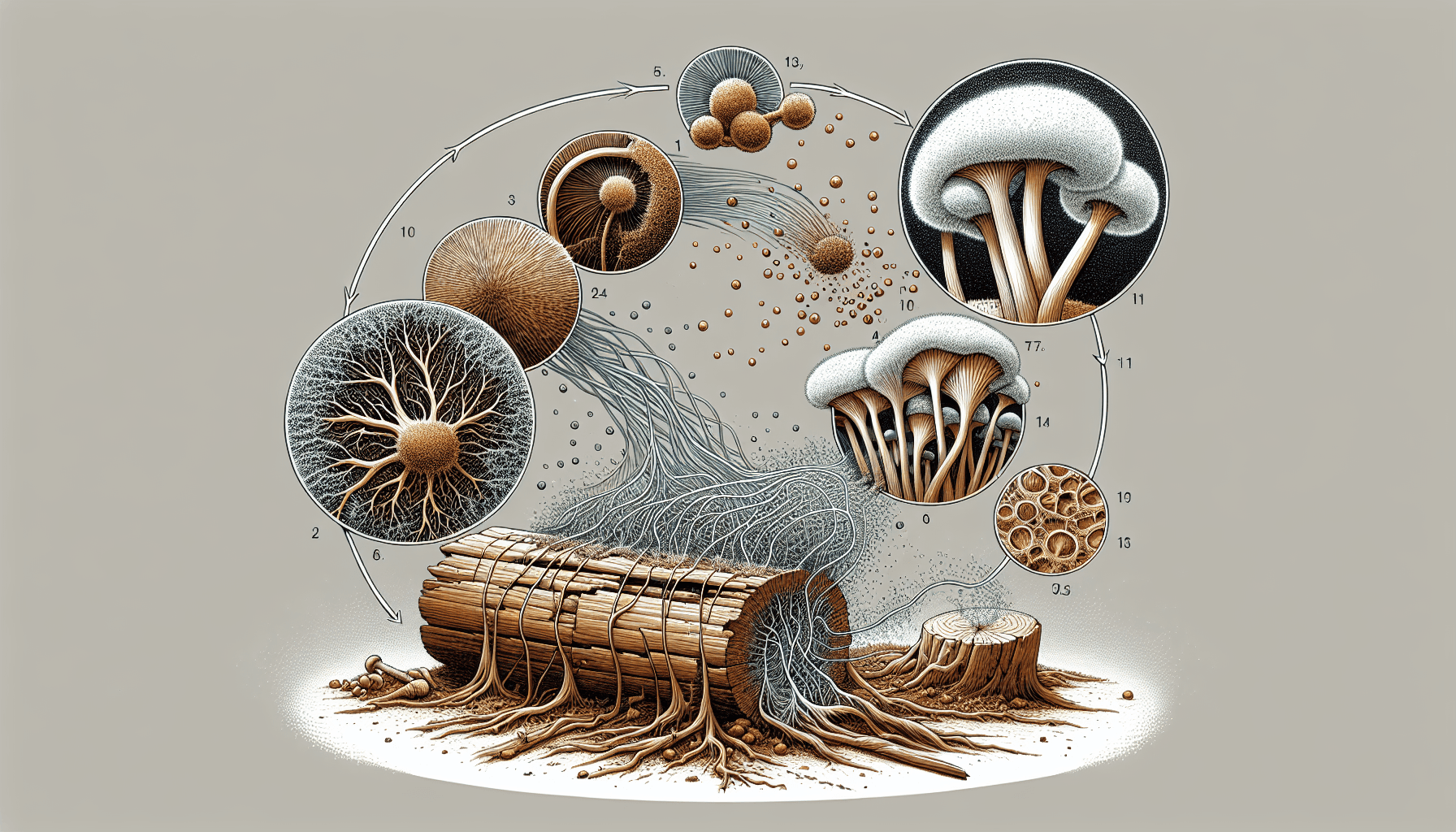
Far from a fleeting encounter, dry rot is a calculated siege that progresses methodically through a carefully planned lifecycle. The invasion commences with microscopic spores that, upon finding their moist haven, germinate into hyphae—fine, white strands that weave a web of destruction akin to spider silk. These hyphae are the vanguard, paving the way for the formation of a mycelium, a cotton wool-like entity that infiltrates the timber, signaling a progressing dry rot infection.
The lifecycle of dry rot includes several stages:
Spore germination: Dry rot spores land on damp wood and begin to germinate.
Hyphal growth: The spores develop into hyphae, which are thread-like structures that spread through the wood.
Mycelium formation: The hyphae grow and form a network called mycelium, which is the main body of the fungus.
Fruiting body emergence: The final stage is the emergence of the mushroom-like fruiting body, which is a sign of mature dry rot infestation.
Understanding this cycle is important for effective dry rot defense, as each stage offers an opportunity for intervention and halts further deterioration.
Preventing Dry Rot in Buildings
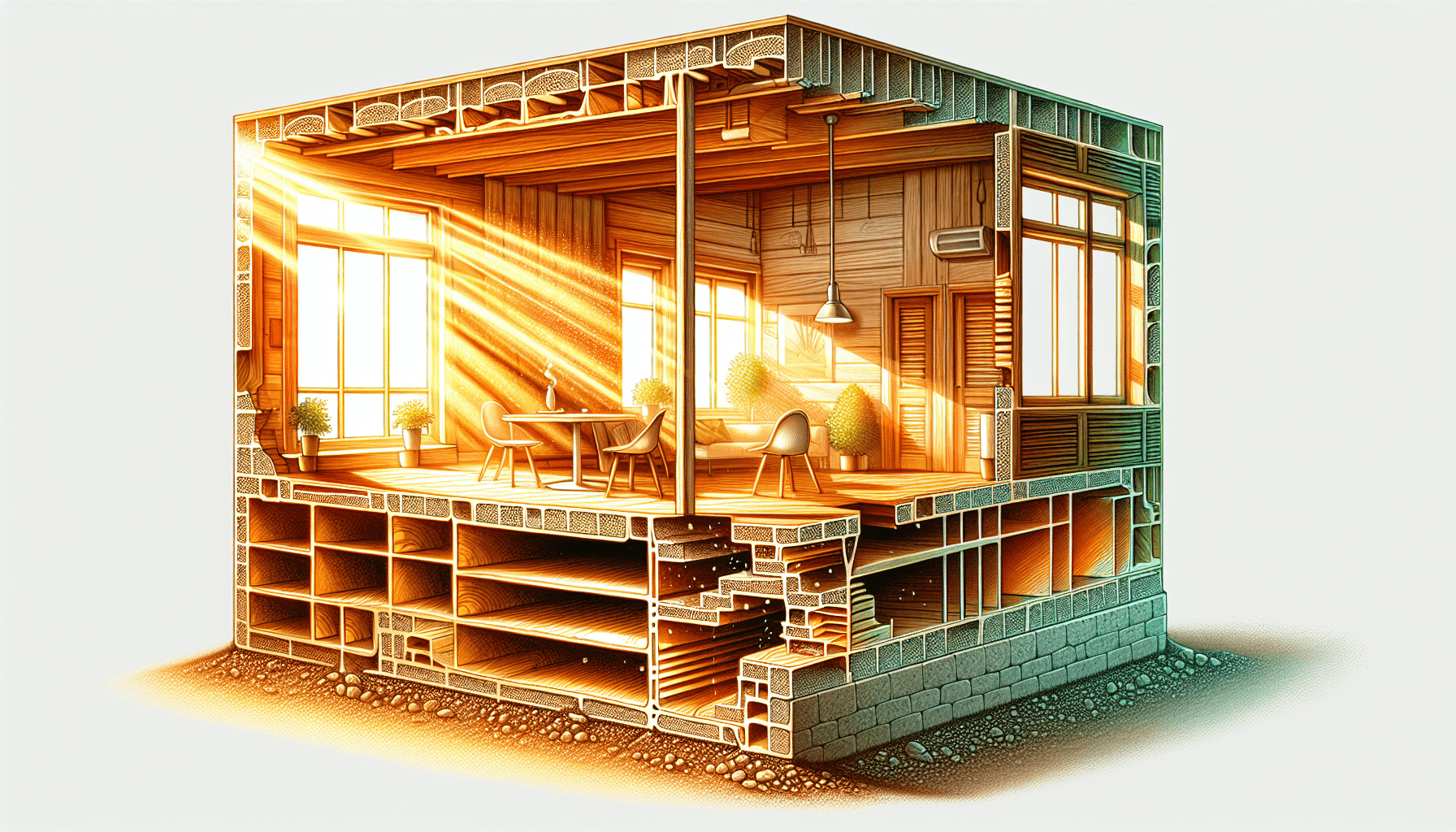
In our battle against dry rot, we need to employ tactics that counter the conditions it thrives in. Prevention is more than an act—it’s a strategy that encompasses moisture control, ventilation, and the basking glow of sunlight to deter the fungal foe. By sealing the cracks where moisture whispers, installing sentries like exhaust fans, and ensuring that wood sidings stand clear from the moist embrace of the earth, we construct barriers that keep the dry rot at bay.
The goal is to create an environment where dry rot spores cannot survive, thereby preserving the structural integrity that forms the backbone of our buildings.
Moisture Control: The Key to Prevention
Although ‘dry rot’ may seem like a misnomer, don’t be fooled—it’s moisture that fuels this destructive organism. To identify dry rot, be aware that this wood destroying fungi, like a misguided house guest, thrives on substantial moisture and an open invitation through insufficiently protected wood. The first line of defense is a vigilant eye on leaks, ensuring that timber remains a stronghold against fungal incursion by keeping it dry and warm. It’s akin to safeguarding a castle against siege, using tools like borate wood preservatives as the battlements that repel the impending fungal forces and effectively kill dry rot.
Yet, the most formidable weapon in our arsenal is the elimination of moisture itself. Chemical treatments have their place, but removing the source of dampness is akin to cutting off the enemy’s supply lines, ensuring that dry rot is starved into submission. It’s a strategy that requires not just application, but dedication to the cause of dry rot prevention.
Ventilation and Sunlight: Natural Deterrents
Ventilation is the breath of fresh air that stifles dry rot’s advances, a natural ally in the campaign against humidity. By allowing hot air to escape the attic’s clutches and inviting the breeze to sweep through crawlspaces, we disrupt the moist environments that the fungus favors. It’s a simple act—opening windows, encouraging the dance of air currents—that can have profound effects on maintaining a dry rot-free domain.
Let us not forget the role of sunlight, the radiant warrior whose mere presence sends dry rot spores scurrying into the shadows. Where sunlight beams, dry rot finds no foothold, and the warmth it provides is a bastion against the dampness that fuels fungal growth. Incorporating these natural elements into our prevention strategy is more than just a smart move—it’s necessary.
When Dry Rot Strikes: Effective Treatment Options
When dry rot breaches our defenses and takes hold, it’s time to treat dry rot by calling upon the power of treatment methods. The battle plan involves an incisive assessment, followed by surgical strikes that cut through the infected timber and apply the antiseptic might of fungicides. This is not a skirmish to be taken lightly; it’s a calculated campaign to reclaim the affected areas and restore the structural soundness of our homes.
With approaches ranging from removing compromised wood to sterilizing masonry, the diversity and potency of dry rot treatment options promise to halt the spread of decay and strengthen the foundations of our sanctuaries.
Removing Affected Timbers
The integrity of a structure is only as strong as its weakest beam, and thus, the eradication of compromised timber is a critical maneuver in the fight against dry rot. This is not a mere trimming of edges but a decisive excision, extending well beyond the visible scars left by the fungus. It’s a methodical process, where infected timbers are cut away with precision, leaving a margin that ensures the fungal adversary has been thoroughly vanquished.
Equipped with tools like a trim router, we carve out the disease, effectively purging the rot and setting the stage for restoration. It’s a bold move, but one that is necessary to prevent the resurgence of an enemy that would otherwise lay dormant, biding its time to strike afresh.
Fungicidal Treatments: Killing Dry Rot
The application of fungicide in the aftermath of timber removal is akin to a cleansing fire, purging the remnants of dry rot from the wood’s surface. With a brush or a sprayer as our tools, we douse the surrounding area in a potent concoction that ensures the fungal foe is left with no sanctuary within reach. For the masonry that has felt the cold touch of dry rot, a different kind of poison is required—a biocide that penetrates to the core, halting the spread and securing the bulwark of our homes.
This chemical warfare is essential, a necessary step to reclaim the ground lost to dry rot and prevent its insidious tendrils from taking hold once again. It’s a testament to human ingenuity that we’ve crafted such targeted weapons in our ongoing war against decay.
Addressing Dry Rot in Vehicles: Tire Maintenance
The fight against dry rot extends beyond the confines of our homes to the vehicles that we rely on for our daily journeys. Tire maintenance becomes a critical front in this war, for the signs of tire dry rot—cracks, degradation of rubber, and a faded hue—are telltale marks of an enemy that threatens not just the lifespan of dry rot tires but our safety on dry rotted tires.
It’s a fight that encompasses regular inspections, the use of robust tires, and the application of protectants that shield our rubber chariots from the elements that conspire to weaken them.
Recognizing Tire Dry Rot
The symptoms of tire dry rot are distress signals that demand attention. Some signs of dry rot include:
Cracks that web across the sidewall
Brittleness that betrays the rubber’s fatigue
Discoloration that tells of prolonged battles with the sun and cold
Consistently low pressure, which might indicate a breach in the tire’s defenses
If you notice any of these symptoms, it is important to address the issue promptly.
To ignore these warnings is to court danger, for driving on faulty vehicle tires compromised by dry rot is to gamble with the unpredictable, where blowouts and failures lurk like bandits on the road. Recognition is the first step in prevention, and in the case of tire dry rot, it’s a step that cannot be delayed.
Maintaining Properly Inflated Tires
The mantra of maintenance rings true when it comes to preserving the vigor of our tires. Proper inflation is the lifeblood of tire health, a simple yet effective measure against the creeping onset of dry rot. Overinflated tires strain against their bounds, their rubber slowly parting ways, while underinflated tires succumb to the excessive heat that feeds the dry rot.
Through diligent care and by maintaining the golden equilibrium of air pressure, we can extend the lifespan of our tires significantly, thwarting the advancement of dry rot and ensuring that our wheels roll on, unimpeded by the ravages of time. It’s an act of preservation that, while often overlooked, can mean the difference between a journey’s safe conclusion and an unexpected halt. Prevention tire dry rot is a crucial aspect of vehicle maintenance that should not be ignored.
Professional Assessment: Scheduling a Dry Rot Survey
Sometimes, knowledge is our most powerful weapon, and a professional dry rot survey serves as a reconnaissance mission to uncover the extent of the infiltration. Be it before purchasing a property or as a landlord safeguarding an investment, a dry rot survey is a prudent step in preventing financial ruin and ensuring the longevity of a structure. For tenants, it’s the shield that wards off the specter of exorbitant repair costs and the disruption of their daily lives.
The dry rot survey is a meticulous examination, a strategic assessment that reveals the weak points in our defenses and provides the intelligence needed to mount a decisive counteroffensive. It’s an investment in the future, preserving not just the structural stability but also the market value of the property against the devaluation that extensive damage can cause. With a tailored treatment strategy in hand, the survey becomes the blueprint for victory, guiding us through the necessary steps to eradicate the fungal threat and restore peace to our besieged homes.
Repair vs. Replacement: Cost Considerations
Once the dust settles following a dry rot incursion, a critical decision awaits us: whether to repair or replace the structures that sustained the most damage. This decision is not made lightly, as factors such as the depth of damage, the whispers of local regulations, and the overall vitality of the existing structures tip the scales in this delicate balance. Repairing may seem the more economical path, often reducing material waste and preserving the original character of the building. However, it is essential to consider that replacement, while initially more costly, can bring with it benefits such as improved energy efficiency, increased property value, and the luxury of reduced maintenance costs.
Ultimately, the choice between repair and replacement is a strategic one, akin to choosing between fortifying an existing castle or building a new fortress. Each scenario presents its own set of challenges and rewards, and the wise homeowner will weigh these with care, considering not just the immediate cost but the long-term implications for their domain.
Common Misconceptions About Dry Rot
Over time, misconceptions have cloaked dry rot in a shroud of mystery and fear. Tales from the past, such as Ralph Dodd’s 1815 claim, painted dry rot as an intractable force, spreading as relentlessly as fire on pitch. Yet, as the wheel of time has turned, so too has our understanding of this woeful wood affliction. Modern building codes and a deeper comprehension of the fungus have rendered such fears largely outdated, revealing that with proper ventilation and moisture control, dry rot is not the unconquerable beast it was once believed to be.
Dispelling these myths is not just an academic exercise; it’s a practical reassurance. It’s a reminder that, while dry rot is indeed a formidable opponent, it is one that can be outmaneuvered and overcome with the right knowledge and tools. By shedding light on the true nature of dry rot, we empower ourselves to stand firm against it, maintaining the sanctity and safety of our homes and vehicles.
Summary
As we draw the curtains on our journey through the realm of dry rot, it’s time to reflect on the lessons learned. From the ominous signs that herald its arrival to the lifecycle that fuels its spread, we’ve navigated the murky waters of fungal decay. We’ve uncovered the strategies to prevent its grasp—from moisture control to the embrace of sunlight and ventilation—and when prevention falls short, we’ve delved into the arsenal of treatment options that promise to reclaim and protect our cherished spaces. In vehicles, we’ve learned the importance of tire maintenance and the perils of ignoring the signs of tire dry rot.
The path to a dry rot-free existence is paved with vigilance and proactivity. By staying alert to the signs, maintaining our structures, and seeking professional advice when needed, we can keep this silent destroyer at bay. Let this knowledge serve as a beacon, guiding you through the fog of uncertainty and into the light of preservation and peace of mind.
Frequently Asked Questions
What conditions allow dry rot to thrive in my home?
Dry rot thrives in damp conditions with a moisture content of around 20% and sufficient air access, and cannot survive in completely dry wood or environments.
How can I tell if my home has dry rot?
You can tell if your home has dry rot by looking for visual indicators like crumbled timber, cuboidal cracking, rust-colored dust, or a musty, mushroom-like smell. These are the early signs of dry rot.
Is repairing dry rot damage always cheaper than replacing the affected structures?
Repairing dry rot damage is not always cheaper than replacing the affected structures, as replacement may offer long-term benefits such as improved energy efficiency and lower maintenance costs.
Can I prevent tire dry rot on my vehicle?
Yes, tire dry rot can be prevented by regularly inspecting your tires for early signs of wear, keeping them properly inflated, and using tire cleaners and protectants to extend their life. Being proactive about tire maintenance can help prevent dry rot.
What should I do if I detect the smell of dry rot in my home?
If you detect the smell of dry rot in your home, it's important to inspect for other signs and consider scheduling a professional dry rot survey to assess and discuss treatment options. Take action promptly to prevent further damage.

